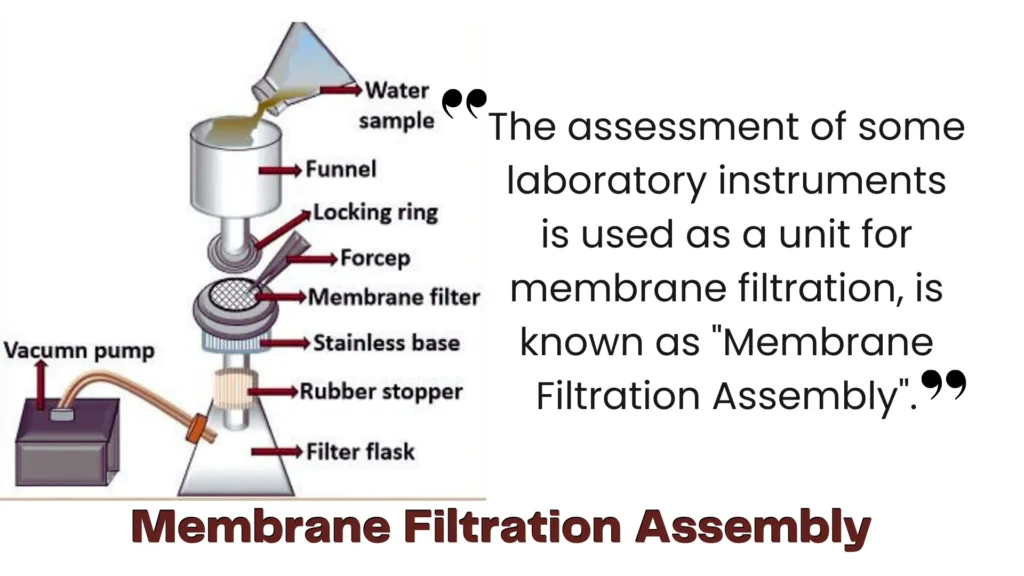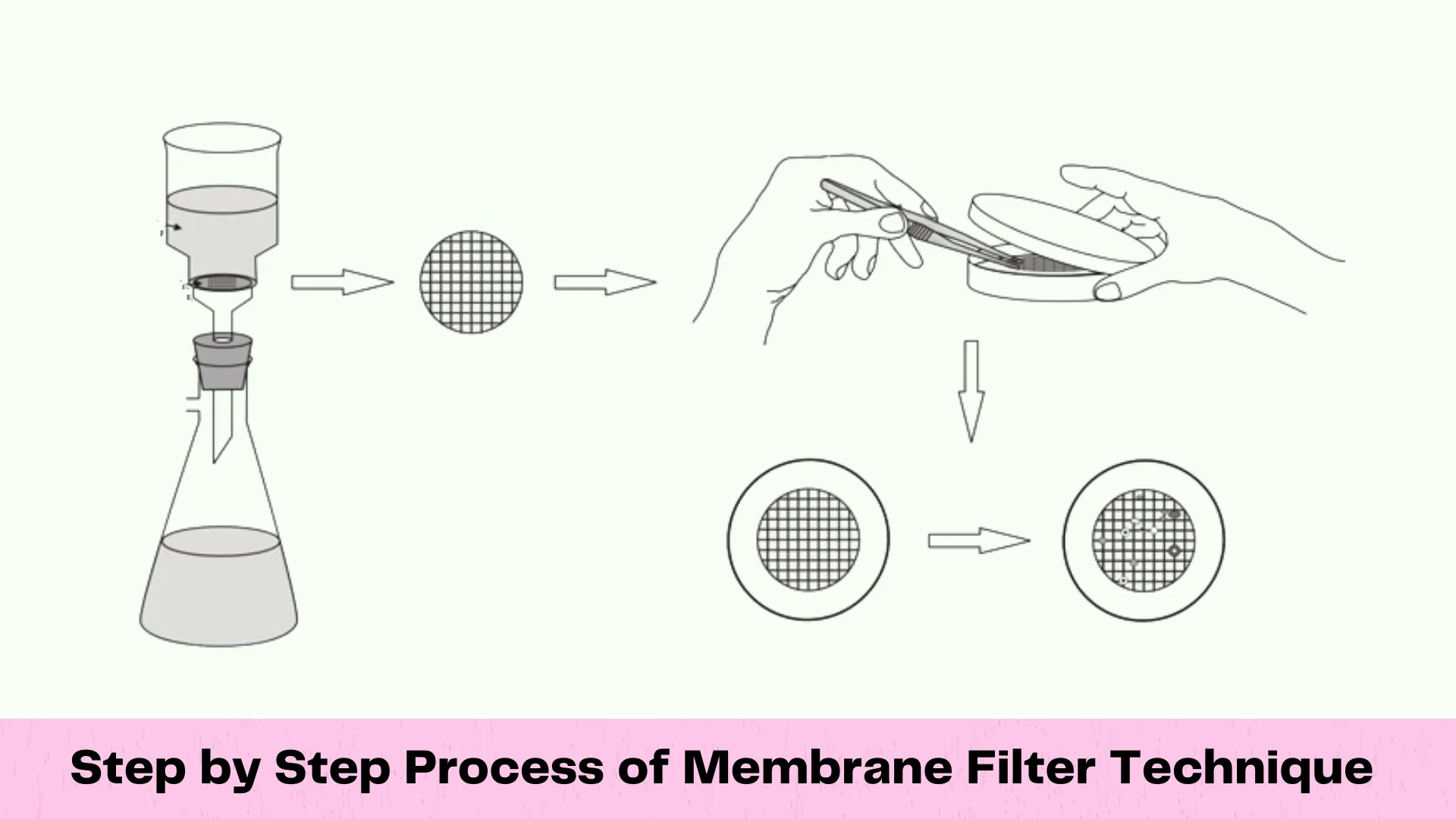Membrane Filter Technique is widely used for the detection of bacteriological examination of water, specifically to determine the water portability. It is also known as “Milipore Filter Technique” or MF technique.
This was developed in Germany during the world war II. In present it is being used considered advantages over Coliform test technique because of it’s significant advantages.
What is Membrane Filter Technique?
Membrane Filter Technique is a bacteriological assessment of water portability by the yse of a specific filter, the membrane filter. In this technique the filter traps the microorganisms present in the sample.
In this test a thin membrane filter disc is used. The filter disc consists of cellulose derivatives and can retain on its surface all bacteria from the water sample.
Generally Endo-broth (GM-9) is used as medium for incubation in MF technique. The pore size on membrane filter is 0.45 , which is significantly small to trap microbes.
Membrane Filtration Assembly
The assessment of some laboratory instruments is used as a unit for membrane filtration, is known as “Membrane Filtration Assembly“.

Components of Assembly
- Funnel
- Locking ring
- Carbon disk
- Stainless base
- Rubber Stopper
- Filter Flask
- Vaccum pump
Working principle of membrane filtration assembly
- Carbon disk : The membrane filter is placed over carbon disk.
- Funnel : water sample passes through it.
- Locking ring : Controls the flow of test water sample.
- Stainless base : It holds the carbon disk and membrane filter over it.
- Rubber stopper : It controls the flow of water towards the filter flask.
- Vaccum pump : Attached with filter flask. It helps in proper filtration of water by creating a suction pressure.
Read more: Hot Air Oven -Principle, Temperature, Uses
Step by step Process of Membrane Filtration
The step by step process of membrane filtration and further incubation is as follows –
- At first the water sample is collected in sterilized container and any necessary dilution is performed.
- Then select appropriate nutrient medium, i.e. Endo-broth medium is used for testing total Coliform. A variety of medium can be used for different microorganisms.
- The prepared media is transferred to a sterilized petri dish, which contains absorbent pad at the bottom.
- A forceps is burnt under flame to sterilize it. Then the membrane is removed form the sterile package using the forceps.
- Flame the opening of the bottle and pour the collected water sample through the funnel. The vaccum system of the instrument helps in complete seperation of the filtrate through the membrane filter.
- Rinse the funnel with sterile buffer water after the complete seperation of the filtrate.
- Then take the membrane filter from the filtration assembly by using sterilized forceps.
- Transfer the membrane filter in previously prepared petri plate containing absorbent pad and suitable medium.
- Incubate the petri plate at at 37⁰C for 18-24 hours.
- Observe the colonies in the colony counter. For detecting and identification of type of microorganism, colonies are isolated for further experiments.

Advantages and Disadvantages of Membrane Filter Technique in Microbiology
Advantages
- Good reproducibility.
- Single step results often possible in many cases.
- Filters can be transferred between different media.
- Large volume of samples can be processed to increase assay sensitivity.
- Time savings are considerable.
- This technique is able to complete filtration on the test site. No need of transportation of water samples in laboratory.
- Lower total cost in comparison to MPN (Most Probable Number) test.
Disadvantages
- High turbidity water limits volumes samples.
- High population of background bacteria cause overgrowth.
- Metals and phenols can absorb to filter and inhibit bacterial growth.
